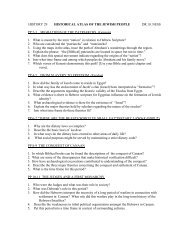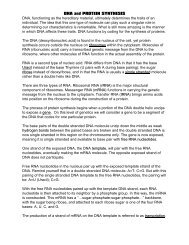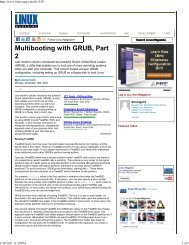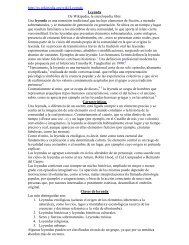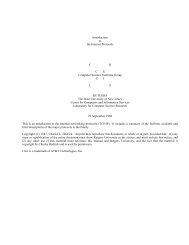CP7e: Ch. 1 Problems
CP7e: Ch. 1 Problems
CP7e: Ch. 1 Problems
Create successful ePaper yourself
Turn your PDF publications into a flip-book with our unique Google optimized e-Paper software.
Figure P5.30<br />
Figure P5.32 (<strong>Problems</strong> 32 and 89)<br />
33. The launching mechanism of a toy gun<br />
consists of a spring of unknown spring<br />
constant, as shown in Figure P5.33a. If the<br />
spring is compressed a distance of 0.120 m<br />
and the gun fired vertically as shown, the<br />
gun can launch a 20.0‐g projectile from rest<br />
to a maximum height of 20.0 m above the<br />
starting point of the projectile. Neglecting<br />
all resistive forces, determine (a) the spring<br />
constant and (b) the speed of the projectile<br />
as it moves through the equilibrium<br />
position of the spring (where x = 0), as<br />
shown in Figure P5.33b.<br />
Figure P5.33<br />
41. A 2.1 × 10 3 ‐kg car starts from rest at<br />
the top of a 5.0‐m‐long driveway that is<br />
inclined at 20° with the horizontal. If an<br />
average friction force of 4.0 × 10 3 N impedes<br />
the motion, find the speed of the car at the<br />
bottom of the driveway.<br />
43. Starting from rest, a 10.0‐kg block<br />
slides 3.00 m down to the bottom of a<br />
frictionless ramp inclined 30.0° from the<br />
floor. The block then slides an additional<br />
5.00 m along the floor before coming to a<br />
stop. Determine (a) the speed of the block at<br />
the bottom of the ramp, (b) the coefficient of<br />
kinetic friction between block and floor,<br />
and (c) the mechanical energy lost due to<br />
friction.<br />
Section 5.6 Power



